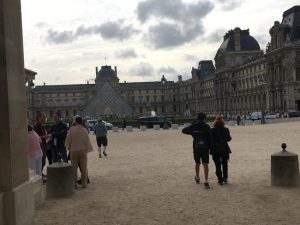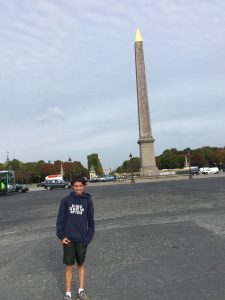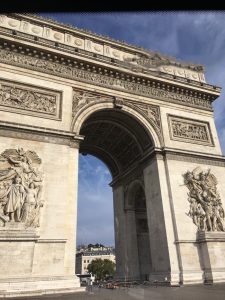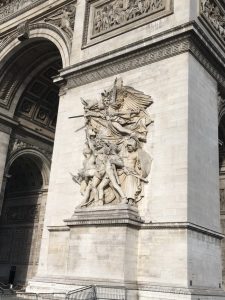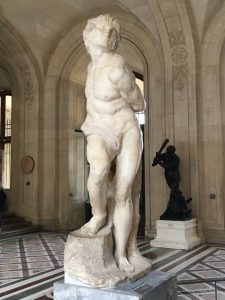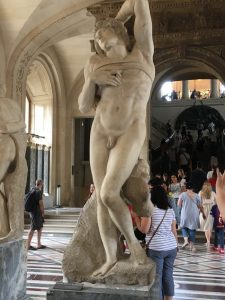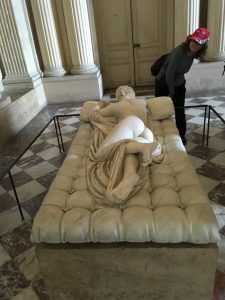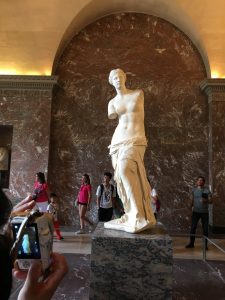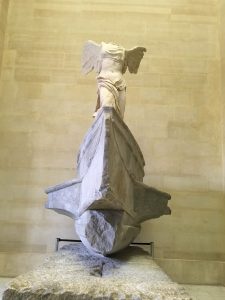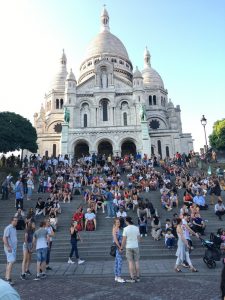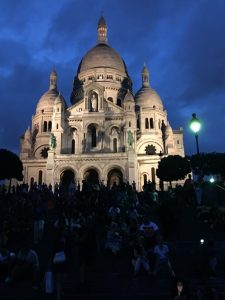Tag Archive
activity architecture art artist building Canada children city CostSaver downtown drive i-95 entertainment Europe event exhibit family festival Florida food fun historic History landmark local Museum music Nature New Zealand Ontario roadtrip sculpture Seattle show sights sightseeing tour tourist Trafalgar travel travelblogger view Washington Washington State water world
France, Paris: Is that an Egyptian Obelisk or the Leaning Tower of Paris?
.
Place de la Concorde is where, during the French Revolution in 1789 the statue of Louis XV of France was torn down. The area renamed the Place de la Révolution and a guillotine was erected in the square. It was here that King Louis XVI was executed on January 21, 1793. On October 25, 1836, King Louis Philippe placed this tall Egyptian obelisk in the center, a gift from the Khedive of Egypt, Muhammad Ali Pasha. The 3,300-year-old Obelisk once marked the entrance to the Luxor Temple and the hieroglyphics on it herald the reign of the pharaoh Ramesses II.
If you squint and look way down the Champs Elysees behind the Obelisk of Luxor, you can see clear back to the Arc de Triomphe.
France, Paris: Hotel des Invalides
.
Les Invalides or Hôtel des Invalides is a vast complex of buildings in Paris including museums and monuments relating to the military history of France. As per its name it was originally built by Louis XIV as a hospital and a retirement home for war veterans. Pictured here is the Dôme des Invalides, a large church, the tallest in Paris which contains the tombs of some of France’s war heroes, most notably Napoleon.
The complex had 15 courtyards for military parades. At the church, attendance was mandatory. Louis XIV also commissioned his architect Mansart to construct a separate royal chapel referred to as the Église du Dôme from its most striking feature (pictured). By combining a royal chapel with a veterans’ chapel, the King and his soldiers could attend mass at the same time while entering the place of worship though different entrances, as prescribed by court etiquette at that time.
I’d like to think the gentleman sitting there (in the wheelchair and on the bench) are two of our veteran heros..
France, Paris: Arc de Triomphe
.
Yup, the symbol of France is still there and still majestic. The Arc de Triomphe de l’Étoile is situated at the center of Place Charles de Gaulle at the western end of the Champs-Élysées. Etoile means star and that refers to the twelve avenues which radiate from the arch.
The Arc de Triomphe honours those who fought and died for France in wars so it became the rallying point of French troops who paraded through it after successful military campaigns and for the annual Bastille Day Military Parade. After the interment of the Unknown Soldier from WWI, however, parades have avoided marching through the actual arch and go around its side, out of respect for the tomb and its symbolism. Both Hitler in 1940 and de Gaulle in 1944 observed this custom. After WWI, in an event captured on newsreels, Charles Godefroy flew his Nieuport biplane under the arch’s primary vault.
The bas relief shown in pic 2 represents Liberty under the figure of a winged woman pushing against the enemy invasion.
France, Paris: The Unnerving Raft of the Medusa at the Louvre
.
If you think life is tough, think of all the sailors that went out into the unknown seas. The shipwrecked Madusa, was left with 115 out of the original 400 sailors on board. There was very little food and water but lots of wine which led to heavy drinking, murder, mutiny and cannibalism. When rescued, only 15 were left alive. This work by Theodore Gericault’s was a seismic shift in art from the stiff neo-classicism of the past to the dramatic and emotional Romanticism in art. It is more of the most macabre painting in the Louvre.
France, Paris: Michelangelo’s Slaves
.
With everyone crowding in to see the Mona Lisa, you can head elsewhere in the Louvre Museum to find 100’s of other famous artists’ works, starting with Michelangelo. He was so brilliant at coaxing human emotions out of the stone. Here are two representations of slaves so painfully showing their despair.
France, Paris: Sleeping Hermaphroditus
.
At first glance this looks like a naked woman sleeping on a very soft cushioned bed but you would be mistaken on both counts. Originally found in the Borgehese gallery in Rome, obviously ancient audiences were comfortable with mixed gender concepts. She might be a he, and Bernini the master sculptor has made marble appear so soft.
France, Paris: Venus, Samothrace, and Mona
.
Three of the most recognized pieces of art in the world. The Venus de Milo (found on the Greek island of Milo) is over 200o yrs old and is still seen as the epitomy of classical female beauty. The Winged Victory of Samothrace is a mastery of carving – just notice the wind ruffling her 2200-year- old dress. And dear old Mona, our guide said she has that secret smile because she knows where Rodin hid The Thinker’s clothing! (See him at the Rodin Museum here in Paris)
France, Paris: Louvre Palace
.
You might not have known that the world’s largest art museum, the Louvre was a palace. Before that it was originally built in the late 12th to 13th century as the Louvre castle under Philip II. Francis I chose it as the residence for French kings where it remained until good old King Louis XIV decided to move to Versailles and this building was then used to store his pretty things.